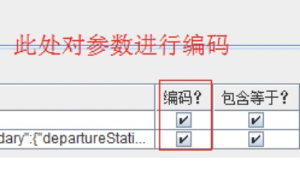当前位置:网站首页>Bagging、Boosting、Stacking集成学习代码
Bagging、Boosting、Stacking集成学习代码
2022-08-08 20:54:00 【yddcs】
Bootstrap aggregating, called simply bagging, is very popular technique used in ensemble of predictors. It helps to increase the accuracy of prediction result and at the same time also reduces variance and allows to avoid overfitting. It is a method for generating multiple versions of predictors and using them to get an aggregated prediction values for unseen input data.
Bagging的算法过程如下:
从原始样本集中使用Bootstraping 方法随机抽取n个训练样本,共进行k轮抽取,得到k个训练集(k个训练集之间相互独立,元素可以有重复)。
对于n个训练集,我们训练k个模型,(这个模型可根据具体的情况而定,可以是决策树,knn等)
对于分类问题:由投票表决产生的分类结果;对于回归问题,由k个模型预测结果的均值作为最后预测的结果(所有模型的重要性相同)。
Boosting的算法过程如下:
对于训练集中的每个样本建立权值wi,表示对每个样本的权重, 其关键在与对于被错误分类的样本权重会在下一轮的分类中获得更大的权重(错误分类的样本的权重增加)。
同时加大分类 误差概率小的弱分类器的权值,使其在表决中起到更大的作用,减小分类误差率较大弱分类器的权值,使其在表决中起到较小的作用。每一次迭代都得到一个弱分类器,需要使用某种策略将其组合,最为最终模型,(adaboost给每个迭代之后的弱分类器一个权值,将其线性组合作为最终的分类器,误差小的分类器权值越大。)

sklearn 集成学习简单实现:
import matplotlib.pyplot as plt
import argparse, random
from sklearn.svm import SVC
import pandas as pd
from sklearn.metrics import f1_score, classification_report, recall_score, precision_score, accuracy_score, confusion_matrix
import sys, time, torch
from sklearn.model_selection import train_test_split, KFold, cross_val_score
import csv
from sklearn.tree import DecisionTreeClassifier
from sklearn.ensemble import RandomForestClassifier, AdaBoostClassifier, GradientBoostingClassifier
from sklearn.neighbors import KNeighborsClassifier
import pandas as pd
from sklearn.svm import SVC
from sklearn.ensemble import BaggingClassifier
from sklearn.datasets import make_classification
# X, y = make_classification(n_samples=100, n_features=4,
# n_informative=2, n_redundant=0,
# random_state=0, shuffle=False)
data_train = np.loadtxt(open('traindata1.csv', encoding='gb18030', errors="ignore"), delimiter=",", skiprows=0)
data_test = np.loadtxt(open('testdata1.csv', encoding='gb18030', errors="ignore"), delimiter=",", skiprows=0)
X_train, y_train = data_train[:, :-1], data_train[:, -1]
X_test, y_test = data_test[:, :-1], data_test[:, -1]
# clf = BaggingClassifier(base_estimator=SVC(), n_estimators=200, random_state=0)
# n_estimators=default 100
# clf = RandomForestClassifier(n_estimators=50, n_jobs=2)
# tree = DecisionTreeClassifier(criterion='entropy', max_depth=None)
# n_estimators=500 生成500个决策树
clf = BaggingClassifier(base_estimator=tree, n_estimators=500, max_samples=1.0, max_features=1.0, bootstrap=True, bootstrap_features=False, n_jobs=1, random_state=1)
# clf = BaggingClassifier(KNeighborsClassifier(), max_samples=0.5, max_features=0.5)
# clf = AdaBoostClassifier(n_estimators=100)
# clf = GradientBoostingClassifier(n_estimators=100, learning_rate=1.0, max_depth=1, random_state=0)
clf.fit(X_train, y_train)
y_pred = clf.predict(X_test)
# best_ntree = []
# for i in range(1, 200):
# rf = RandomForestClassifier(n_estimators = i+1, n_jobs = -1)
# rf_cv = cross_val_score(rf, X_train, y_train, cv=10).mean()
# best_ntree.append(rf_cv)
# print(max(best_ntree), np.argmax(best_ntree)+1)
# 0.9782692307692308 106
plt.figure(figsize=[20, 5])
plt.plot(range(1,200), best_ntree)
plt.show()
print("acc:", accuracy_score(y_test, y_pred))
print("precision", precision_score(y_test, y_pred, average='macro'))
print("recall", recall_score(y_test, y_pred, average='micro'))
print("F1", f1_score(y_test, y_pred, average='macro'))
print(classification_report(y_test, y_pred))
print(confusion_matrix(y_test, y_pred))
detail information and Snapshot_Ensemble see Github
stacking kernel code:
stack_train = np.zeros((X_train.shape[0], num_classes*len(members)),dtype=np.float32) # Number of training data x Number of classifiers
stack_test = np.zeros((X2.shape[0], num_classes*len(members)),dtype=np.float32) # Number of testing data x Number of classifiers
n_folds = 5
a, b = 0, 0
skf = KFold(n_splits=n_folds, shuffle=True, random_state=1)
# For each classifier, we train the number of fold times (=len(skf))
for j, clf in enumerate(members):
print('Training classifier [%s]' % (j))
for i, (train_index, cv_index) in enumerate(skf.split(X_train,y_train)):
print('Fold [%s], j' % (i), j)
print(train_index, cv_index, len(train_index), len(cv_index))
# for j,(train_index,test_index) in enumerate(skf.split(X_train,y_train)):
tr_x = X_train[train_index]
tr_y = y_train[train_index]
# reg.fit(tr_x, tr_y)
# This is the training and validation set
# X_train = X_dev[train_index]
# Y_train = Y_dev[train_index]
# X_cv = X_dev[cv_index]
deepgp = DeepGP(tr_x, tr_y, num_classes=10)
deepgp.train(args.num_epochs, args.num_iters, args.batch_size, args.learning_rate)
# X_train = np.concatenate((X_train, ret_x),axis=0)
# Y_train = np.concatenate((Y_train, ret_y),axis=0)
# clf.fit(tr_x, tr_y)
# clf.fit(tr_x, tr_y, verbose=1, batch_size=batch_size, epochs=epochs, validation_data=(X_test, y_test))
# stack_train[cv_index, j*num_classes:(j+1)*num_classes] = test(X_train[cv_index], y_train[cv_index], clf)
# stack_test[:, j*num_classes:(j+1)*num_classes] += test(X_test, y_test, clf)
# train predction
stack_train[cv_index, 0*num_classes:(0+1)*num_classes] = test(X_train[cv_index], y_train[cv_index], deepgp)
stack_test[:, j*num_classes:(j+1)*num_classes] += test2(X_test, y_test, deepgp)
# j = j+1
stack_test = stack_test / float(n_folds)
bagging kernel code:
def bagging_by_DGP(dataMat, labelMat, fileName, t = 30):#默认并行生成十个基学习器
test_data,test_label = loadDataSet(fileName) #获取测试样本与标签
predict_list = []
accuracy=[]
precisi=[]
recal=[]
f1=[]
for i in range(t):#并行生成T个
train_data,train_label = rand_train(dataMat,labelMat)#自主采样1得到样本
tr_x = torch.from_numpy(train_data)
tr_y = torch.from_numpy(train_label)
deepgp = DeepGP(tr_x, tr_y, num_classes=13)
# epoch iter batch learningr
deepgp.train(60, 128, 512, 0.0001)
y_pred, a, p, r, f = test(test_data, test_label, deepgp, t)
# print('pred', y_pred)
predict_list.append(y_pred), accuracy.append(a), precisi.append(p), recal.append(r), f1.append(f)
print('mean:', np.mean(accuracy), np.mean(precisi), np.mean(recal), np.mean(f1))
print('meta-learning : t', t)
return predict_list,test_label
boosting kernel code:
#训练分类器
def adaBoostTrainDS(dataArr, classLabels, numIt=40):
weakClassArr = []
m = shape(dataArr)[0]
D = mat(ones((m, 1)) / m) #设置一样的初始权重值
aggClassEst = mat(zeros((m, 1)))
for i in range(numIt):
bestStump, error, classEst = buildStump(dataArr, classLabels, D) #得到“单层”最优决策树
print("D:",D.T)
alpha = float(0.5 * log((1.0 - error) / max(error, 1e-16))) #计算alpha值
bestStump['alpha'] = alpha
weakClassArr.append(bestStump) #存储弱分类器
print("classEst: ",classEst.T)
expon = multiply(-1 * alpha * mat(classLabels).T, classEst)
D = multiply(D, exp(expon)) # 更新分类器权重
D = D / D.sum() #保证权重加和为1
aggClassEst += alpha * classEst
print("aggClassEst: ",aggClassEst.T)
aggErrors = multiply(sign(aggClassEst) != mat(classLabels).T, ones((m, 1))) #检查分类出错的类别
errorRate = aggErrors.sum() / m
print("total error: ", errorRate)
if errorRate == 0.0:
break
return weakClassArr, aggClassEst
边栏推荐
- 借问变量何处存,牧童笑称用指针,Go lang1.18入门精炼教程,由白丁入鸿儒,go lang类型指针(Pointer)的使用EP05
- The new library online | CnOpenDataA shares of the listed company basic information data
- 怎样在网上开户买股票比较安全?如何办理开户业务?
- 比较器? 如何使用比较器? 如何自定义比较器?
- 记录非Gui模式Jmeter使用
- Bluu海鲜公司推出首批实验室培育的鱼类产品
- 关于Mac终端自定义命令和Mysql命令问题
- nacos作用
- Notes: The difference between laravel, updateOrCreate and updateOrInsert
- Flask 教程 第二章:模板
猜你喜欢
随机推荐
Swoole 健康检查
go基于泛型实现继承
编译原理——LL1分析程序实验(C#)
Servlet.service() for servlet [dispatcherServlet] in context with path [] threw exception
Mysql management commands
Jmeter常见问题处理及常用功能
Kotlin委托属性知识点
Flask 教程 第二章:模板
基于opencv的图片人像移除
基于opencv的实时睡意检测系统
MySQL8 免安装版安装
C#实现Everything——数据显示
Kotlin study notes
昇腾Ascend 随记 —— TensorFlow 模型迁移
Kotlin-学习的第五天之Handler
WPF主窗体调用 User32的SetWindowPos 设置窗体置顶会导致与其他窗体抢夺焦点的问题
Flask 教程 第十三章:国际化和本地化
我们仍未知道那天踩的MultipartFile file为null的大坑是为什么
编译原理——词法分析程序(C#)
Educational Codeforces Round 112 D. Say No to Palindromes




![Servlet.service() for servlet [dispatcherServlet] in context with path [] threw exception](/img/95/1041a1c23d020c272ca345d87019b2.png)



